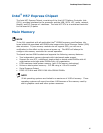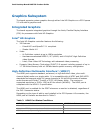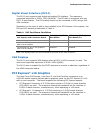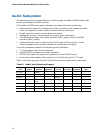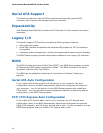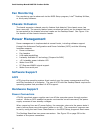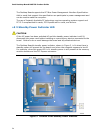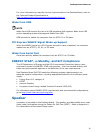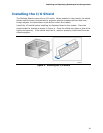
Desktop Board Features
23
Fan Headers
The function/operation of the fans is as follows:
• The fans are on when the board is in the ACPI S0 or S1 state.
• The fans are off when the computer is in the ACPI S3, S4, or S5 state.
• Each fan header is wired to a tachometer input.
• All fan headers support closed-loop fan control that can adjust the fan speed or
switch the fan on or off as needed.
• All fan headers have a +12 V DC connection (up to 12 V DC when using 3-wire
chassis fans).
• All fan headers are controlled by Pulse Width Modulation.
• The chassis fan header supports linear fan control on 3-wire fans.
The Desktop Board has a 4-pin processor fan header and a 4-pin chassis fan header
compatible with 4-wire and 3-wire chassis fans.
LAN Wake Capabilities
CAUTION
For LAN wake capabilities, the 5 V standby line for the power supply must be capable
of delivering adequate +5 V standby current. Failure to provide adequate standby
current when using this feature can damage the power supply.
LAN wakeup capabilities enable remote wake-up of the computer through a network.
The LAN subsystem monitors network traffic and upon detecting a Magic Packet*
frame, it asserts a wake-up signal that powers up the computer.
Instantly Available PC Technology
CAUTION
For Instantly Available PC technology, the 5 V standby line for the power supply must
be capable of delivering adequate +5 V standby current. Failure to provide adequate
standby current when using this feature can damage the power supply and/or effect
ACPI S3 sleep state functionality.
Instantly Available PC technology enables the board to enter the ACPI S3 (Suspend-to-
RAM) sleep state. Instantly Available PC technology enables the board to enter the
ACPI S3 (Suspend-to-RAM) sleep-state. While in the S3 sleep-state, the computer will
appear to be off (the power supply is off and the front panel power LED will behave as
configured by the BIOS “S3 State Indicator” option). When signaled by a wake-up
device or event, the system quickly returns to its last known wake state. When
signaled by a wake-up device or event, the computer quickly returns to its last known
awake state.



